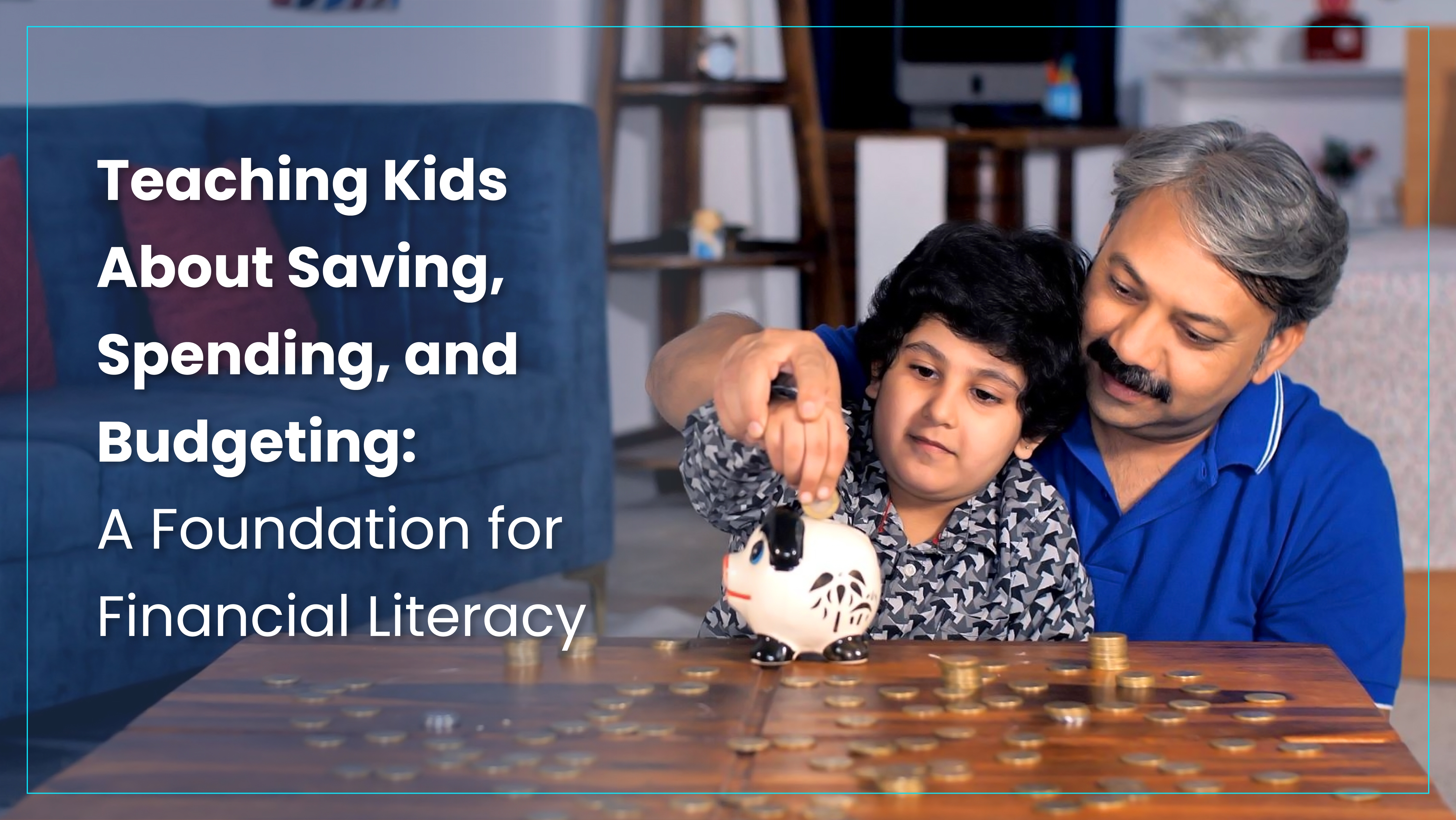Teaching kids about money proves to be a crucial life skill that sets the foundation for their future financial success. Parents and educators alike recognise the importance of instilling financial literacy in children from a young age. By teaching children the basics of budgeting, saving, and spending, they equip them with the tools they need to manage their finances wisely. This blog explores effective strategies to teach kids about money, with a focus on saving, spending, and budgeting.
1. Start with the Basics: Understanding Money
The first step in teaching financial literacy to children is helping them understand what money is and how it works. Using real-life examples and simple language to explain the concept of money proves effective. Showing them coins and bills, and explaining their value, makes it tangible. Discussing how people earn money through work and how it is used to buy goods and services helps solidify their understanding.
2. Teach Children the Importance of Saving
One of the most critical aspects of money management for children is learning to save. Encouraging kids to set aside a portion of their allowance or any money they receive as gifts is a good practice. Using a clear jar or a piggy bank so they can see their savings grow proves to be a motivating visual aid. Explaining the benefits of saving, such as being able to buy something special in the future or having money for emergencies, reinforces the habit.
3. Introduce the Concept of Budgeting
Teaching children the basics of budgeting is essential for their financial literacy. Helping them create a simple budget by listing their income (allowance, gifts, etc.) and expenses (toys, snacks, etc.) provides a practical framework. Showing them how to allocate their money into different categories, such as savings, spending, and sharing (charity), teaches them to prioritise their spending and make informed financial decisions.
4. Encourage Goal Setting
Goal setting is a powerful tool to teach kids about saving and budgeting. Encouraging children to set short-term and long-term financial goals helps them focus. Short-term goals could include saving for a toy or a book, while long-term goals might involve saving for a bicycle or a special trip. Helping them create a plan to achieve these goals, emphasising the importance of patience and discipline, makes the process rewarding.
5. Make Learning Fun with Games and Activities
Engaging children in fun and interactive activities reinforces financial concepts. Board games like Monopoly or The Game of Life teach kids about money management, investments, and budgeting in an enjoyable way. Additionally, online games and apps designed to teach financial literacy can be valuable resources.
6. Lead by Example
Children often learn by observing their parents’ behaviour. Demonstrating good financial habits in one’s own life sets a strong example. Involving kids in everyday financial decisions, such as grocery shopping or planning a family budget, provides practical learning experiences. Discussing the importance of making thoughtful spending choices and avoiding impulsive purchases reinforces good habits.
7. Teach the Value of Money through Work
Assigning age-appropriate chores and offering a small allowance as compensation helps children understand the connection between work and earning money. This approach teaches them the value of hard work and the satisfaction of earning their own money.
8. Discuss Needs vs. Wants
Helping children differentiate between needs and wants is crucial. Explaining that needs are essential for daily living, such as food, clothing, and shelter, while wants are things that are nice to have but not necessary, guides their spending decisions. This understanding helps kids make better financial choices and prioritise their goals.
9. Encourage Generosity
Teaching children about sharing and giving is an essential aspect of financial literacy. Encouraging them to set aside a portion of their money for charitable donations instils a sense of responsibility. Discussing the importance of helping others and the positive impact of their contributions fosters empathy and generosity.
Teaching financial literacy to children is an investment in their future. By teaching kids about saving, spending, and budgeting, parents and educators equip them with essential skills that will serve them throughout their lives. Starting early, making learning fun, and leading by example helps children develop healthy money management habits and a strong foundation for financial success.
Stay Ahead with Narayana Educational Institutions!
📈 Ready to take your child’s financial literacy to the next level? Join our Telegram channel for exclusive tips, expert insights, and resources that will help you and your child thrive in today’s financial world.
🔗 Join the Narayana Educational Institutions Official Telegram Channel
✨ Don’t miss out—stay informed, stay connected, and set the foundation for a brighter financial future with Narayana!

No
Good thought… We need like these messages.. Thank you for sharing to us.